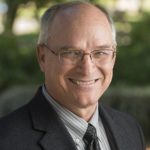Greece in the Shoulder Season
Greece in the Shoulder Season
The Fresno Pacific Alumni and Friends Tour took its first fall trip last September and October. The travel term for this time of year is the “shoulder season,” not the peak season (June to August) when school is out, and everywhere is busy with tourists and travelers. The crowds are less dense, the weather is more moderate, and even the costs are sometimes lower.
We have wanted to go to Greece since we started the tours in 2017, but I was teaching and many FPU alums are teachers, and so we waited. Alums I have surveyed have listed Greece as one of their most highly desired trips. Finally, this year we were able to do it, and with a small group (14 instead of our usual 20) and only one working teacher we boarded the plane for Athens.
We traveled through most of central and southern Greece, making a kind of circle. We began in Athens went north and west eventually taking a ferry to the island of Corfu, then went south to the Peloponnese and Olympia (yes, where the ancient Olympics were held), east to Corinth and Nafplio and then north back to Athens. Greece is not large, so the days of travel were not long. And the landscape and vegetation are much like California—it felt a little like home.
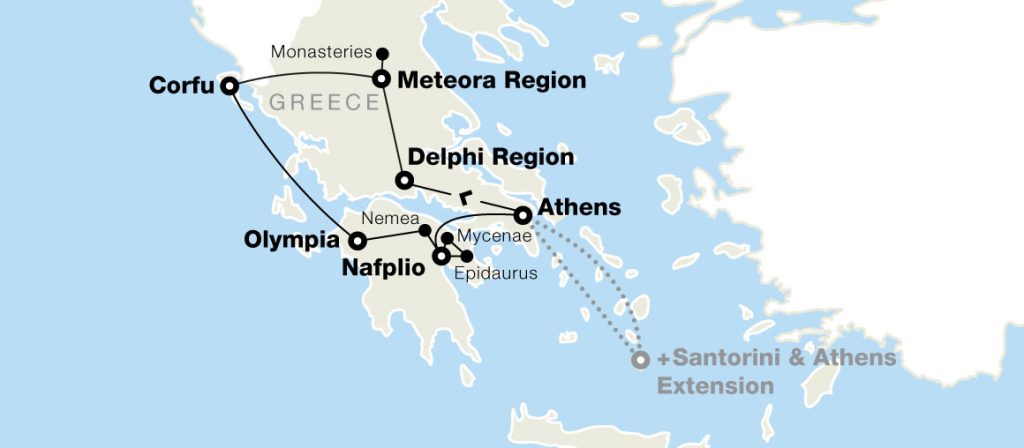
We saw ancient sites that are part of our cultural language. We walked through the Olympic complex, complicated like today’s Olympic villages, if smaller. It even had rooms for philosophic discussions, and places of worship. I don’t know if our villages have these. I haven’t heard of them or seen them, and I’ve been to a few modern Olympic sites. We visited Delphi where the Oracle spoke with its studied ambiguity.
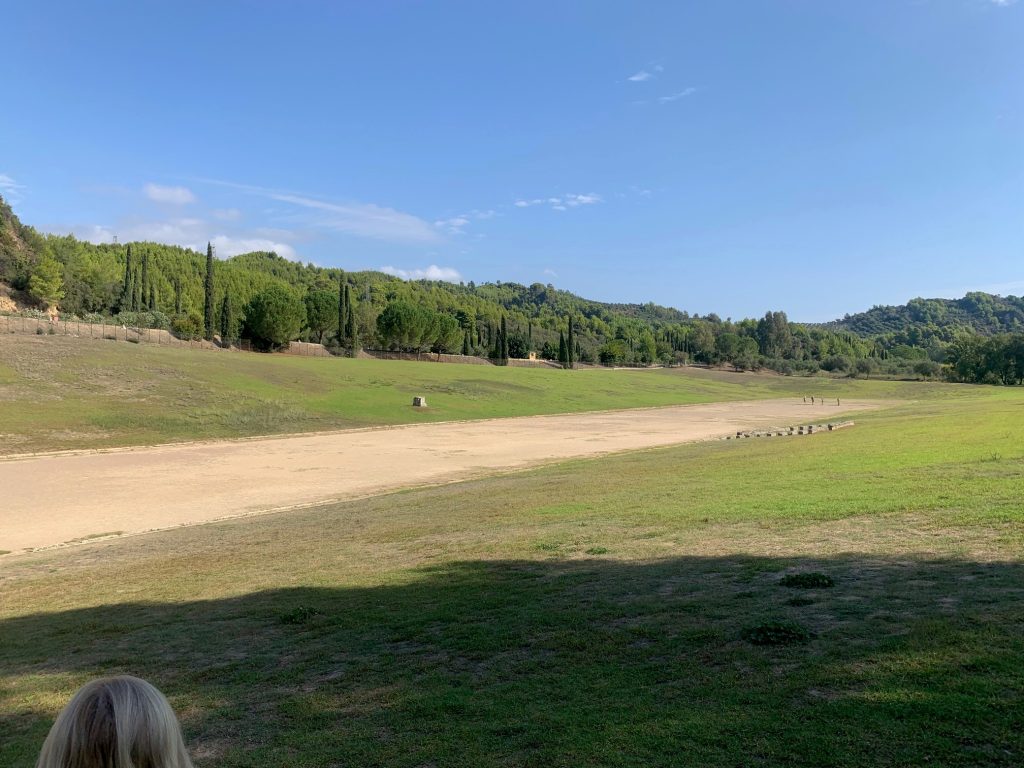
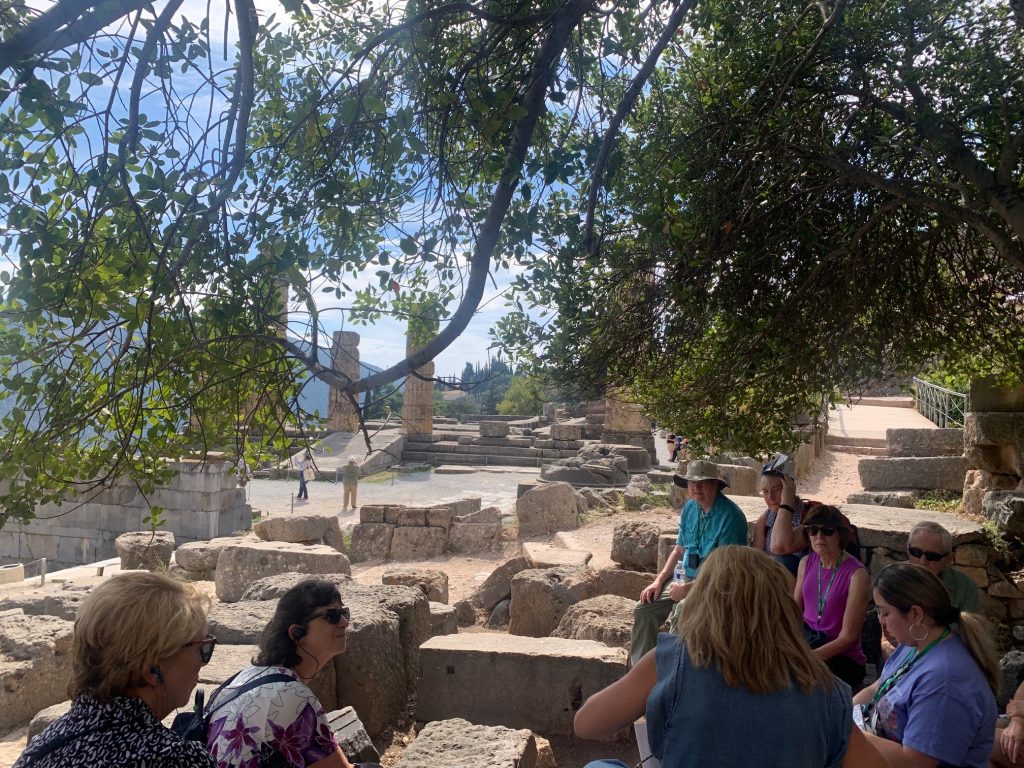
We climbed up to the Acropolis (High City) and the Parthenon and multiple other temples. And some of us made our way down to the ancient Agora (marketplace) in Athens. If you have seen pictures of Athens you have seen the Acropolis. One morning we sat in a café next to the agora, where we looked up at the Acropolis as we enjoyed cake and Greek coffee and tea. We walked into Agamenon’s tomb, and climbed to the ancient hill-top, walled city of Mycenae.
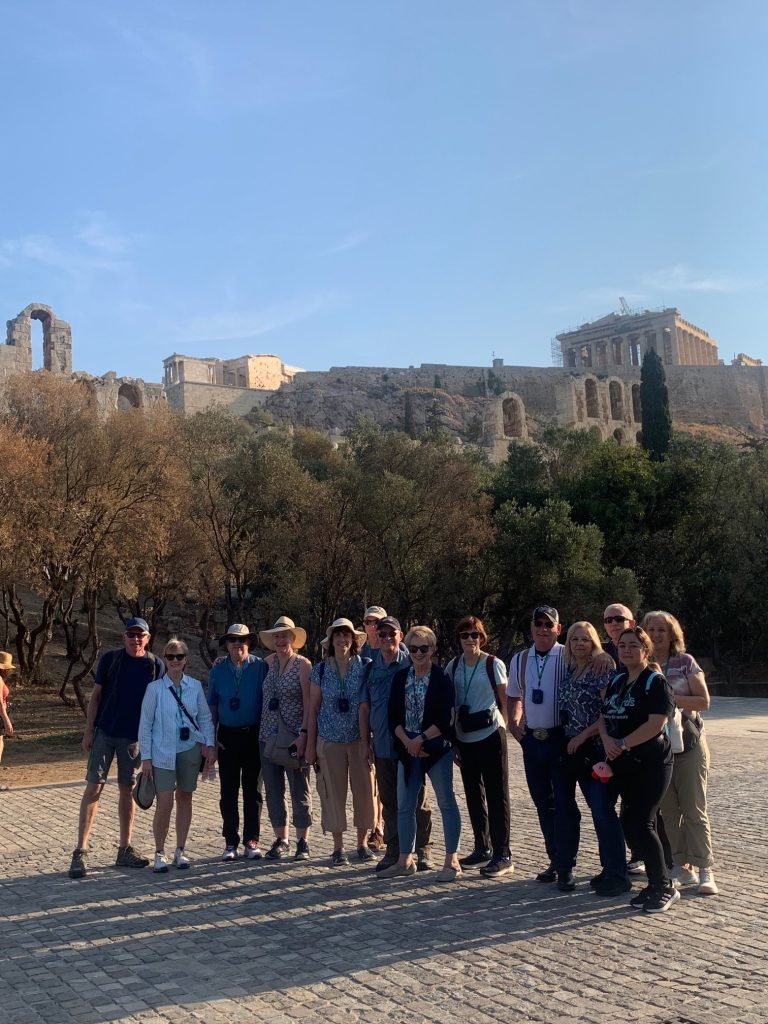
We sat in the ancient theater at Epidaurus, a place famous for medicine and healing, and listened to words spoken softly fifty yards below us, hearing them distinctly as they were directed to us by the carefully carved angles of the stone seating. Our local Greek guides at each of the sites were especially good.
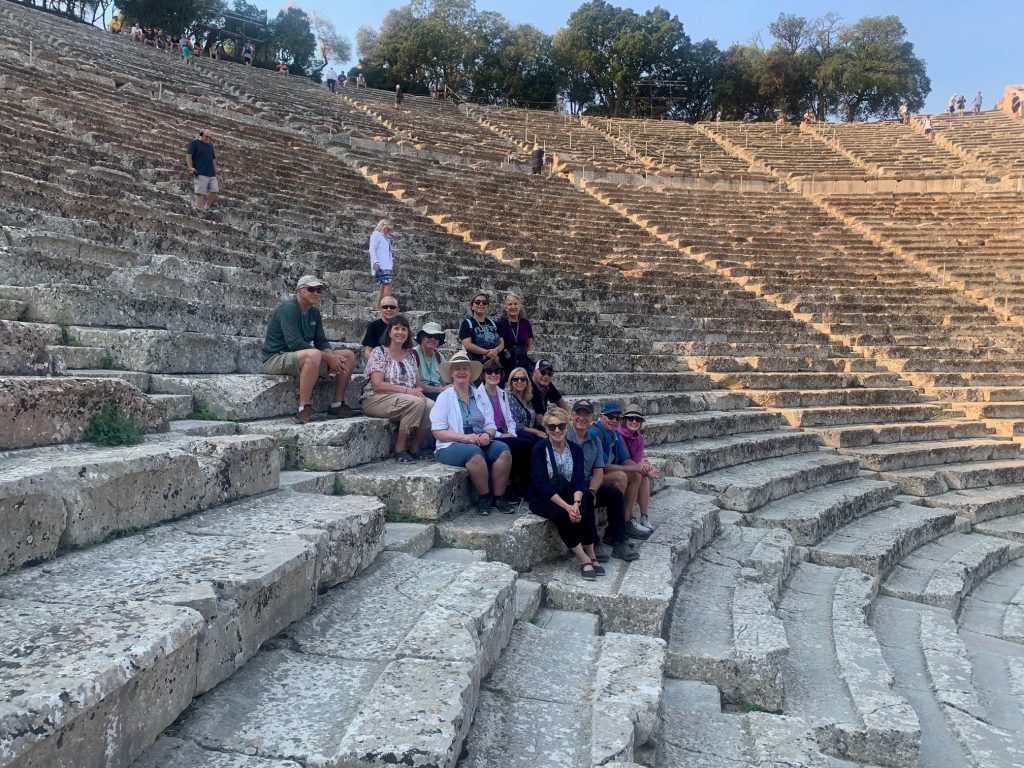
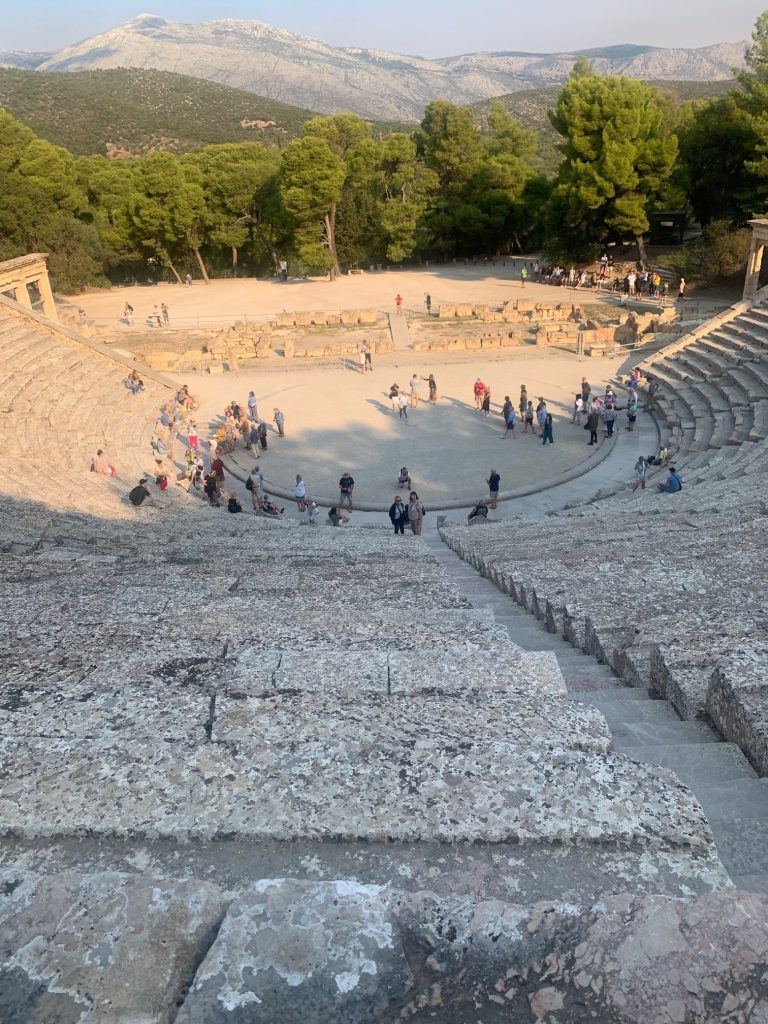
We also visited Christian sites. We saw in Athens the Areopagus Hill where the Apostle Paul spoke to the philosophers and together read Acts 17 which portrays that meeting. The Synagogue where early Christians might have met was down in the Agora. We also visited Corinth where Paul was taken for a hearing and his case dismissed as told in Acts 18. As one of our group said it was kind of “chilling” to be there.
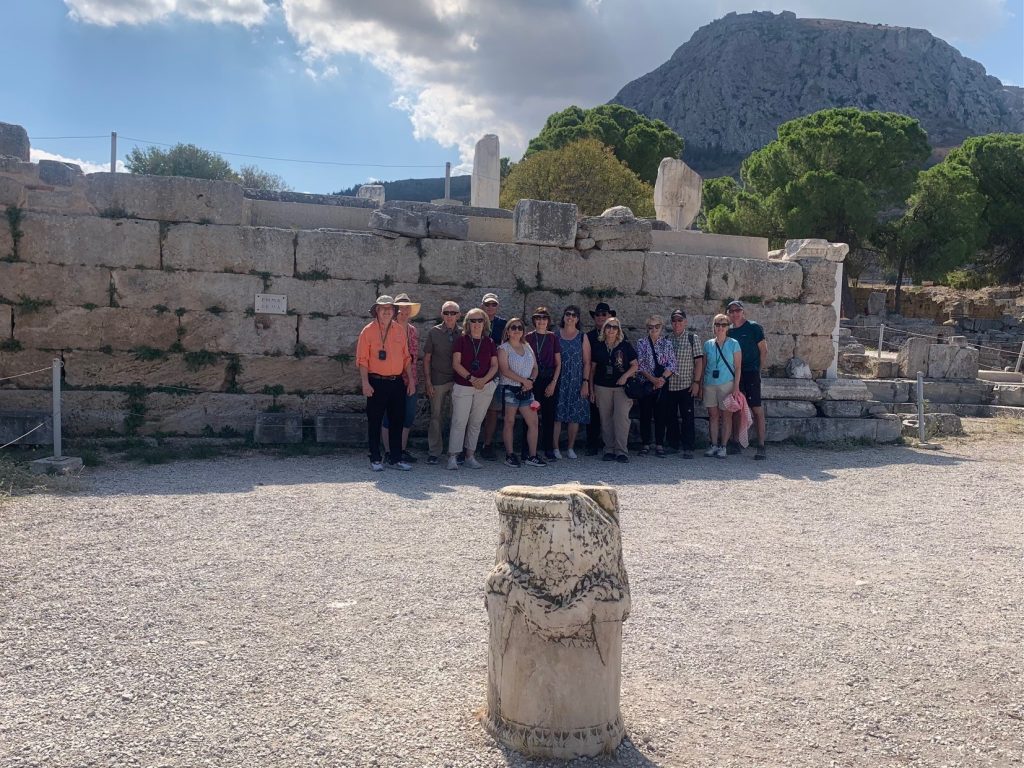
We also visited the Metropoli or Metropolitan Cathedral in Athens, seeing our first Iconostasis and mural of Jesus in the Dome. We also visited the rock-top monasteries in Meteora, and our tour director surprised us with a stop to the studio of an Icon painter, Father Pefkis, where we observed the traditional painting methods and designs of Orthodox icons that have not changed for more than a thousand years.
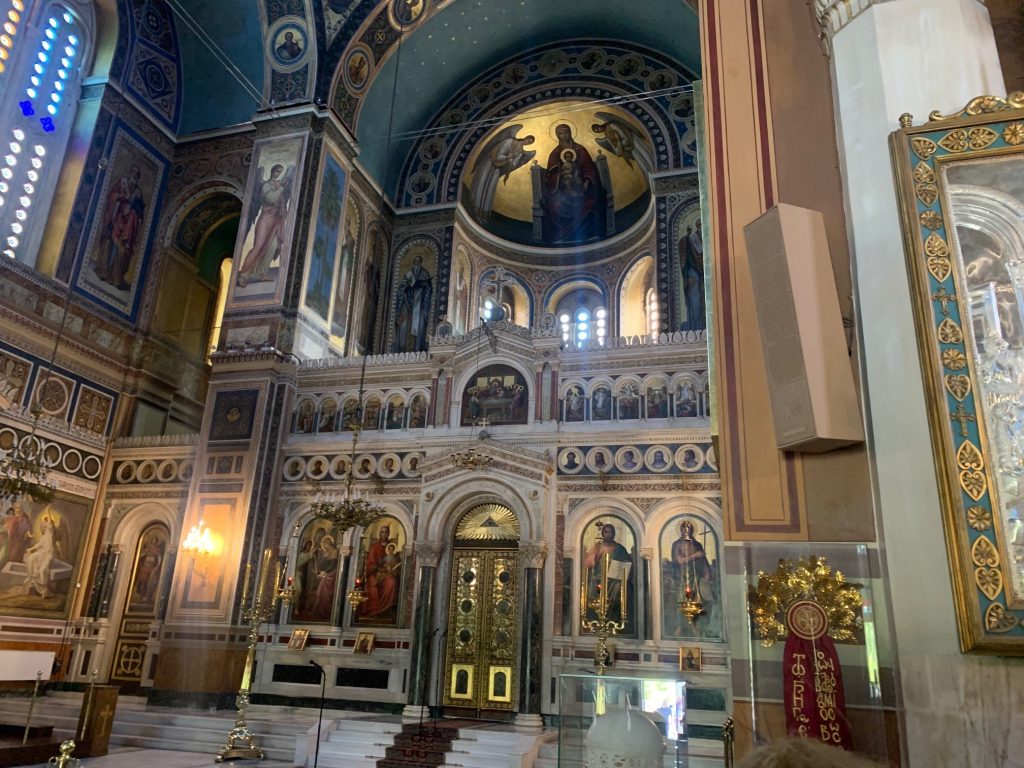
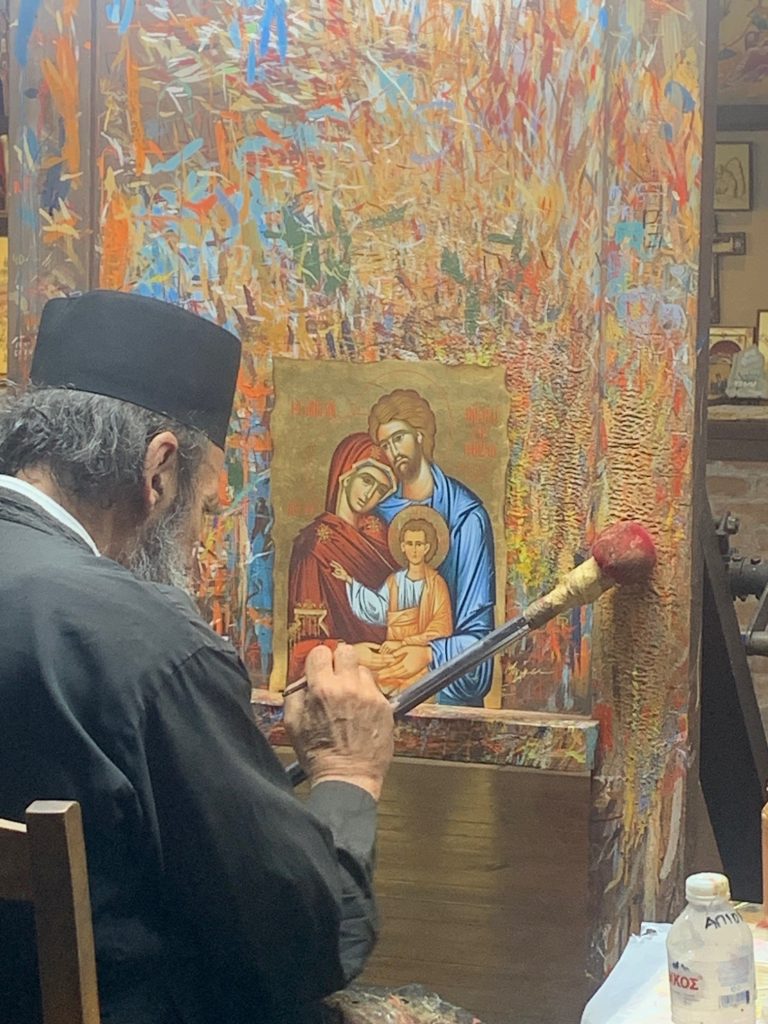
And we experienced too modern Greece and its history. Nafplio mentioned above was the first capital of modern Greece after its revolution in the early 1800s. And, of course, Athens is the modern capital with its 4.5 million residents, government buildings, museums both of antiquity and modern art and artifacts. We visited a working olive grove and sampled olive oils and other olive products.
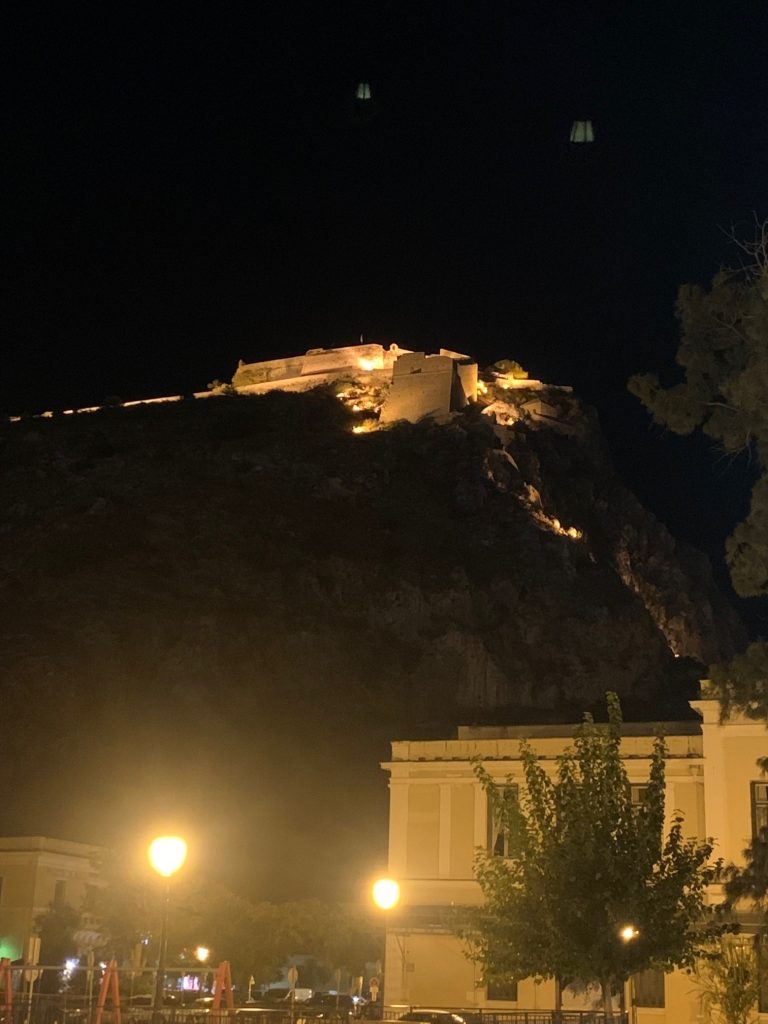
We saw Corfu and its 19th-21st century villas and both Venetian and British elements. (Maybe you saw the PBS series “The Durells on Corfu?” It looks much like that still). We drove through small, hill-top villages, and seaside towns and ports, and stayed for one night in a winter resort. Throughout our time we enjoyed Greek street food and traditional Greek meals.
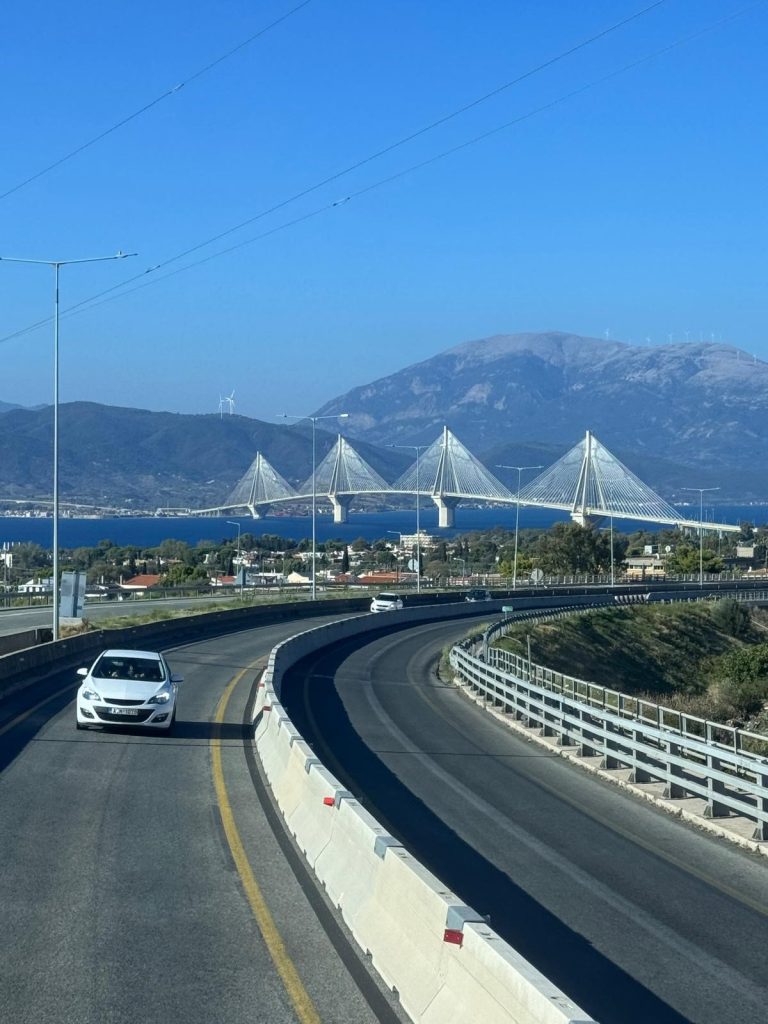
Most of us ferried to one of the Greek islands, Santorini, for a few extra days and enjoyed both a visit to an ancient Minoan city (over 3500 yrs old) just uncovered 50 years ago and a bustling resort town (the crowds were manageable since we were not there at the peak of the season).
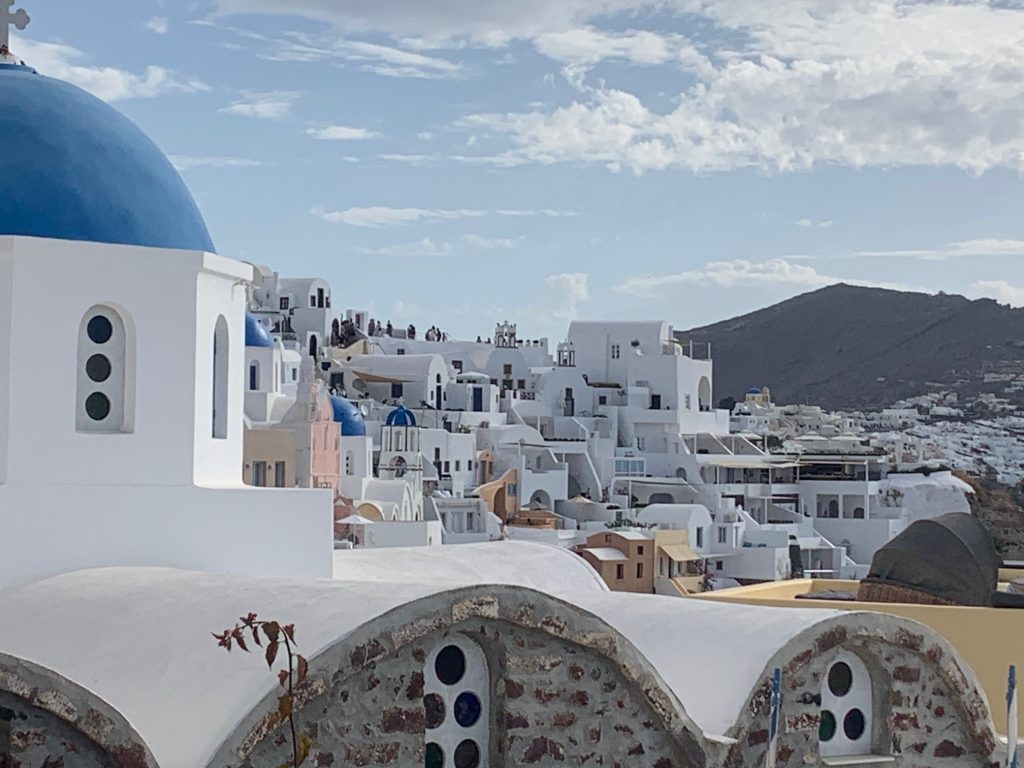
One morning a group of us climbed up the narrow staired walkways to an old (3-400 years—really not very old for Greece) Venetian palace turned into a hotel and restaurant, and sat out in the morning sun under umbrellas for a lite treat, and Greek Coffee (for some of us) which turned into a long break that continued into lunch as we looked out at the turquoise sea of the Santorini caldera, the bright blue domes of the shrines and chapels dedicated to local saints, and the low growing vineyards that sloped down to the cliffs at the shore. It was difficult to leave.
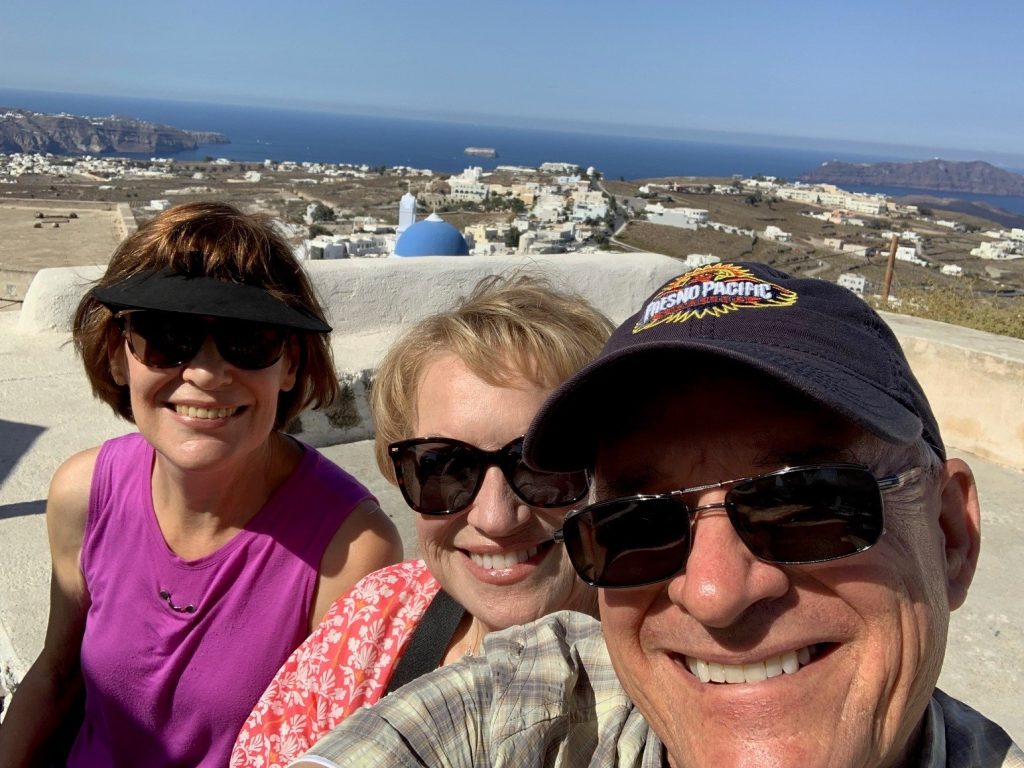
All the above tells you something about why we travel and why we enjoy it. I don’t need to spell it out. Some days we are on the road, on most days we walk a couple of miles (sometimes more) to sites or events, on other days we take it easy and enjoy the air, the view, the food. The FPU Alumni and Friends tours are what our tour group calls “customized, private tours.” They are not open to just anyone. Everyone has a connection to FPU whether they are alums, family of alums, friends of alums and their families (or friends of friends of…), staff, faculty and board members or supporters of the school. We interpret the relationship generously! I listen to our groups speak about what they enjoyed and what they could have skipped, where they want to travel, what they like to do, and plan future tours with our tour consultants to create an itinerary that has the kind of elements we experienced in Greece, planned just for our alumni, families, and friends.
